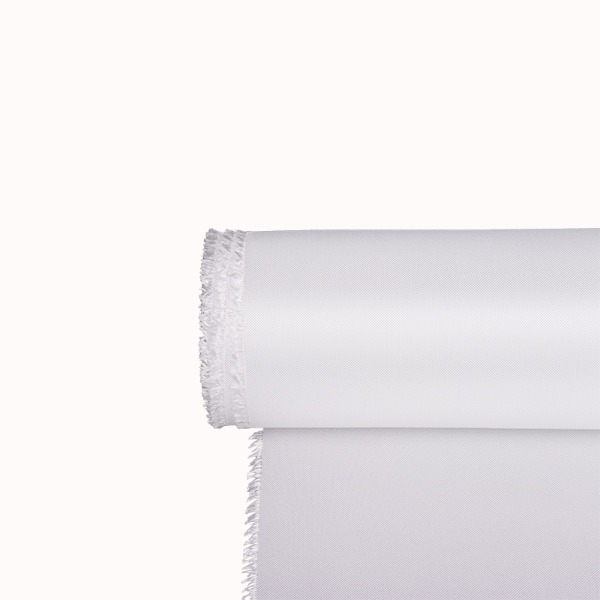Thermal Insulation Properties and Scientific Principles of High Silica Fabric
High silica fabric is an inorganic fiber material composed of high-purity silicon dioxide, typically containing over 95% silica content. This unique chemical composition grants it exceptional resistance to high temperatures, enabling it to withstand extreme conditions exceeding 1000 degrees Celsius in continuous use environments. Its thermal insulation mechanism primarily relies on the multi-layered air barriers formed by the fibrous structure, effectively blocking heat conduction and radiation. At the microscopic level, the amorphous structure of high silica fabric gradually transforms into a more stable cristobalite structure under high temperatures, further enhancing the material's thermal stability. Experimental data indicates that the thermal conductivity of a 2mm thick high silica fabric felt is merely 0.036 W/m·K, approaching the insulation effect of stagnant air. This characteristic makes it an indispensable insulating material for high-temperature industrial equipment, particularly excelling in processes requiring precise temperature control.Critical Applications of High Silica Fabric in Fire Safety
In the field of fire protection, high silica fabric demonstrates irreplaceable value. When exposed to open flames, the material does not produce molten droplets or release toxic gases, with a limiting oxygen index (LOI) exceeding 28%, classifying it as a flame-retardant material. Utilizing this property, fire equipment manufacturers have developed a new generation of firefighting suit liners that maintain structural integrity when directly contacting flames, buying valuable rescue time for firefighters. The construction industry processes it into core filling material for fire-resistant curtains, effectively preventing fire spread in high-temperature environments. Particularly noteworthy is high silica fabric's ability to expand volumetrically under high temperatures, enabling it to seal architectural gaps and form effective fire barriers. Multiple fire experiments have proven that protection systems incorporating high silica fabric can increase fire resistance limits to over 120 minutes.Advantages of High Silica Fabric Welding Protection Solutions
Welding operations generate sparks and slag reaching temperatures of 2000 degrees Celsius, conditions that traditional protective materials often struggle to withstand long-term. Welding blankets made from high silica fabric not only effectively capture flying sparks but their unique fibrous structure also absorbs impact energy, preventing molten metal droplets from penetrating the protective layer. Field test data shows that under continuous exposure to welding sparks, this material's service life exceeds that of ordinary fiberglass products by more than three times. Application cases from shipbuilding yards demonstrate a 67% reduction in onsite fire accidents after implementing high silica welding protection systems. More importantly, the material contains no toxic substances and does not release harmful gases at high temperatures, significantly improving the occupational health environment for welding operators.Innovative Applications of High Silica Fabric in Aerospace
Spacecraft re-entering the atmosphere face aerodynamic heating exceeding 1500 degrees Celsius, posing extreme demands on thermal protection systems. High silica fabric, with its excellent thermal stability and low thermal conductivity, has become a preferred material for return capsule insulation layers. Engineers combine it with phenolic resin to create lightweight ablative thermal protection materials. This composite material undergoes controlled pyrolysis reactions at high temperatures, forming effective thermal barriers through carbonization layers. Notably, high silica fabric maintains a stable dielectric constant below 3.8, enabling it to meet both thermal protection and electromagnetic wave transmission requirements simultaneously. In satellite antenna systems, thermal insulation shields made from this material maintain optimal operating temperatures for communication equipment without compromising electromagnetic signal transmission quality.Chemical Corrosion Resistance Analysis of High Silica Fabric
Beyond its high-temperature resistance, high silica fabric demonstrates exceptional resistance to most acidic chemicals. After 24 hours of immersion in 95% concentration sulfuric acid solution, its mass loss rate does not exceed 3.5%. This anti-corrosion property stems from silicon dioxide's inherently stable chemical nature, where silanol groups on the fiber surface establish equilibrium with hydrogen ions in the acid solution, preventing further corrosion. Chemical plants utilize it as insulation lining for reaction kettles, ensuring thermal efficiency while avoiding equipment leakage risks caused by corrosion. The environmental engineering sector leverages this characteristic to develop acid-resistant filter bags that operate stably long-term in flue gas purification systems. Experiments confirm that these filter bags can maintain service for over 18 months in acidic environments with pH values of 2-3, far exceeding the durability limits of ordinary organic filter materials.
